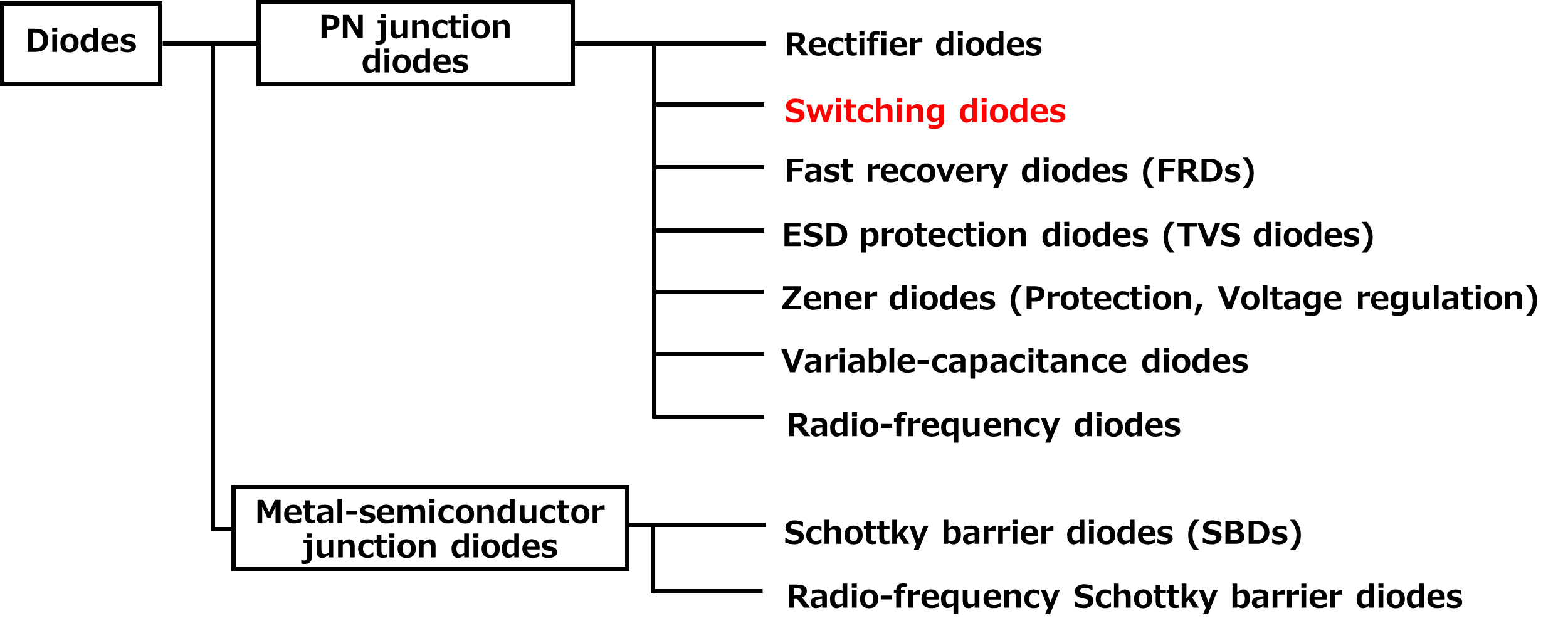What is a switching diode?
A switching diode is suitable for switching a small signal of up to 100 mA, acting as a rectifier. In contrast, a rectifier diode is used for AC line rectification (from alternating current to direct current). Switching diodes are designed to handle a voltage of less than tens of volts. Those in small surface-mount packages are widely used.
A switching diode, a type of pn junction diode, is also called a small-signal diode. Applications of pn junction diodes include rectification. Diodes for mains rectification require a high withstand voltage (200 to 1000 V) and a high rated current (0.5 A or higher). In contrast, switching diodes are designed to be used for low-voltage logic. Therefore, switching diodes provide a low withstand voltage of 80 to 200 V and a low rated current of 0.15 to 0.5 A. AS a result, it is possible to reduce the junction area of switching diodes and thereby realize low capacitance and short reverse recovery time*.
Switching diodes are used in a wide range of electronic devices for various applications, including switches, transient voltage suppressors, diode logic, voltage clamping circuits, and voltage detection circuits.
Fig. 1 shows Toshiba's classification of diodes, including switching diodes.

* Reverse recovery time is not guaranteed for some switching diodes
Related Links
For products, please refer to the following links.





